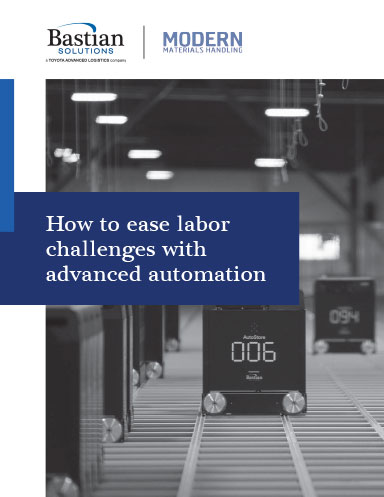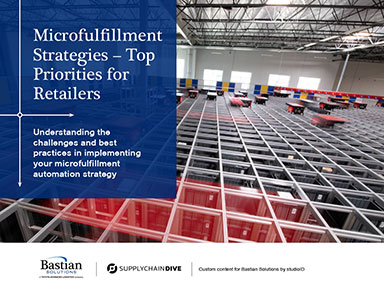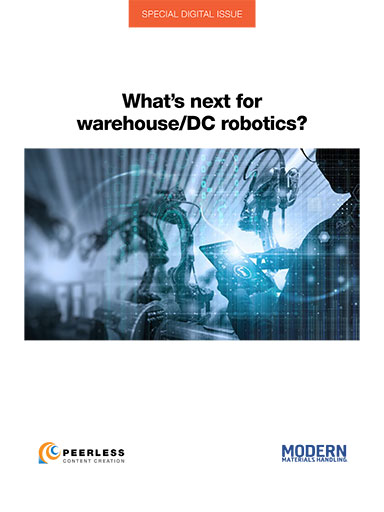Modern Automated DC Operations Still Require Management

More companies are starting to prioritize automation while those that had already put a lot of focus on automation are not looking to slow down - In fact, there is greater emphasis on it.
Companies are realizing the competitive advantages that automation provides and are starting to challenge why adding a goods to person or ASRS system may or may not work in their business.
The increased focus on automation, does not remove or decrease the need for strong operational management, if anything, it still requires communication and organization from leadership to succeed.
Automation helps efficiency but a facility must rely on good processes and timely communication of information to manage a dynamic environment. A popularly sought-after benefit of automation is access to a lot of data and tools for managers to quickly view, analyze and make operational decisions based on that data in real time.
After making sure to avoid common pitfalls and preparing for the new automation project, it is important to clearly define expected day to day operations for the facility with the new automation and the new standard operating procedures to meet the business expectations. There is no ‘easy button’ with automation to set it and forget it.
Maximizing Your New Automation
Automation improves efficiencies and often enables business growth but as with many things, requires ongoing management, fine tuning and training.
Communication
As important as communication is during product implementation, it is equally important for successful operations once the automation is installed and in use. You might explore a need for changes in the way your company communicated or decide to keep things as is. Either way, confirmation and consistency at every level of management helps to ensure there is clear understanding. Some areas that are good to review include:
Types of work shifts
- Multiple shift operations
- Shifts with the same and different activities
Processes
- Differing practices for activities in each shift, needs for consistency
- Escalation paths and policies
- Formal, structured handoff from management on different shifts
Communication
- Shared details
- Update requirements
Adjusting Expectations
During start up with an automation system, there is a learning curve and things take time. Operators are trained and start performing their tasks each day.
Once you have been up and running for a little bit, it is important to be clear and revisit job roles and expectations, especially because you’ll likely have some shifts and adjustments to make with the automation system.
Is there a pick rate goal or a stocking rate goal by the operator, for example? Is facility environment appropriately reset at the end of a shift and prepared for the next shift?
With new equipment and systems, you may need to create new checklists to ensure the equipment and new processes can continue operating as expected. For example, clearing the trash line conveyor to avoid a back-up or flagging broken or out of operation equipment, and addressing these issues quickly.
Measurement and Metrics
Your throughputs will certainly change with automation and, naturally, so to should your metrics and KPIs. Your warehouse execution or management software will help to provide increased visibility to your operations but are new reports or dashboards needed that weren’t considered during implementation of the automation? What information would benefit the operations team and what might not anymore?
In addition to the initial metric evaluation during your project install, you will want to evaluate after installation to see if further changes or considerations are needed.
Continuous Training
Training should not be one and done. Continuous training and refresher training especially on exception processes and updated SOPs (standard operating procedures) is important across all levels in the facility from managers to leads or supervisor to end users.
Does everyone know where to look up the information they may need to manage and monitor? Adding automation may change which system or tool needs to be used to get the right information.
Make sure the entire warehouse operations management team understands the KPIs, how and when to monitor the KPIs and the questions to ask. Also, they should be aware of the corrective actions to take when goals are not being met. This could include asking the automation integrator to return or help with additional training. This may come up during employee turnover, new company initiatives, or as a regular refresher.
Establish Super Users and Have Enough of Them
Super users are those that know the ins and outs of the automation system. Trained super users become your go-to, onsite resources. If you don’t already have identified super users your automation integrator can help you with job descriptions or to identify the necessary skill set qualities.
If you already have set super users, the integrator can help make sure they are trained properly, as well as provide input if named super users meet the new automation system requirements and suggest changes, if needed.
As you plan, it’s important to ensure that you have more than one super user trained and available. If you run multiple shifts, we encourage having more than one per shift.
Over time, consider follow up training from the integrator to help continue to develop the super users’ knowledge and troubleshooting skills.
Success After Install
Deciding to automate and preparing your operations for automation can be quite the challenge but to really make sure that your investment carries through, it’s just as important to have ongoing management, fine tuning and training.
At Bastian Solutions’ we know these challenges well and can help provide advice, a thorough project roadmap, and resources to ensure that new automation project succeeds well past the equipment install.
Related White Papers
How to Ease Labor Challenges with Advanced Automation
Automation can help a retailer handle everything required with their unique e-commerce fulfillment challenges. Download Now!
Microfulfillment Strategies – Top Priorities for Retailers
Consumers’ buying patterns have changed the game for retailers - COVID has supercharged the demand for online shopping, same day or even within the hour delivery. Download Now!
Article Topics
Bastian Solutions News & Resources
Movu Robotics and Bastian Solutions partner to offer flexible robotics solutions GEODIS maximizes flexibility and minimizes touches Exotec adds Bastian Solutions as newest regional integrator in North America Depalletizing and palletizing gain in flexibility Bastian Solutions CB18 AGF: Smart, Efficient Manufacturing and Distribution Material Handling – no Operators Needed Bastian Solutions reveals automated guided forklift Bastian Solutions SmartPick™: Reimagine Order Fulfillment with Artificial Intelligence More Bastian SolutionsLatest in Warehouse|DC
Cambium is on a Quest to Breathe New Life Into Old Wood Record High in Container Production Expected for 2024 IBM Investing $730 million to Expand Semiconductor Plant in Canada Indiana Tests Futuristic Highway that Can Charge EVs While Driving Week in Review: Baltimore Bridge Price Tag, FTC Fines Williams-Sonoma, and More GXO and Conair Open Maryland’s Largest Distribution Center Robots are Enhancing Human Workers, Not Replacing Them More Warehouse|DC















